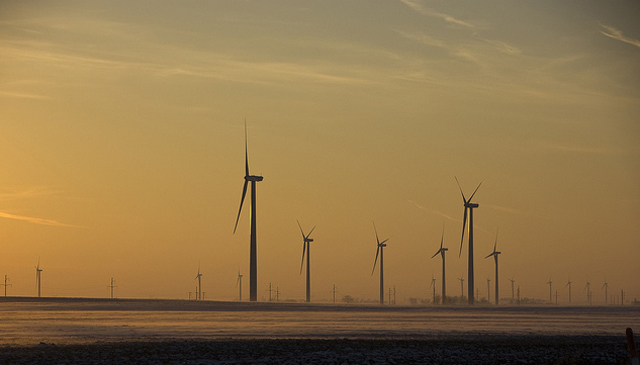Can Voters Deliver Cheaper, Cleaner Electricity to Chicago?
By JoshMogerman in News on Nov 5, 2012 2:30PM
Lost in the full-court press of bitter local campaign ads as Election Day (thankfully) draws near is a big vote that could restructure your electricity bills. On Tuesday, Chicagoans will decide whether to set up a municipal aggregation plan, which would allow the City to bundle and negotiate terms for electricity bills in town. Think of it as a local pool of electric customers, buying electrons in bulk to have more control over price and sourcing. Nearly 250 communities in Illinois already have similar programs, but Chicago would be the biggest city to take the step. The ballot initiative is raising expectations for cheaper and cleaner electricity in town, but there are legitimate questions about whether it can live up to the high hopes.
Everyone agrees that ComEd’s current long-term contracts with power suppliers puts the price paid right now above current market rates. So if voters approve the initiative and the City can turn the program around quick, cheaper prices in the short term are almost guaranteed. Even ComEd publicly “encourages customers to shop for electricity,” which might be because their higher-priced contracts expire next summer, potentially setting the utility up to be a low-price option. (They stay in the mix no matter what, since electric suppliers would deliver electricity on ComEd’s wires.)
The City and clean energy advocates also see the aggregation effort as an opportunity to give wind, solar and other renewable technologies a shot in the arm in Illinois. But while Chicago can probably put together a cost-competitive low-carbon energy mix for consumers, very little of it will be generated in Illinois due to some quirks in state law. Simply put, Illinois’ rules and short-term contracts make it likely that renewable energy would come from out of state, rather than create a market for new long-term generation in the Land of Lincoln. This issue was highlighted by Grist’s clean energy wonk-in-chief David Roberts:
Illinois is a big deal where power is concerned: of U.S. states, it’s the sixth largest consumer of electricity and the fourth largest producer. It has more nuclear power plants than any other state and is unusually dense with underutilized transmission lines, which are at a premium these days. It has a thriving wind power industry (though it is a sad 18th in installed solar capacity), and a bustling, green-minded metropolis in Chicago, which boasts nearly 80,000 green jobs.A drive south on I-55 illustrates that wind is a big deal in this state. But as we have noted, the industry is in trouble as important federal support is mired in partisan fighting. If folks in the state capitol took Roberts' advice, aggregation might offer Springfield an important opportunity to help keep the wind industry moving here. The Mayor and an array of heavy hitters have lined up behind the effort and its potential clean energy outcomes, so we hope City Hall will keep engaged in discussions around opportunities to boost rooftop solar with the new program to ensure a similar impact on clean energy production in Chicago.
…
Here’s the top line, for those of you with short attention spans: Illinois has a renewable energy standard (in dork-speak, known as a renewable portfolio standard, or RPS), which on its own is a good thing. It also has a law allowing communities to take responsibility for their own power supply, and a growing number of communities choosing to do so, which on its own is also a good thing. Unfortunately, because of poor design, the latter policy is on a collision course with the former. The answer? Fix the RPS.
